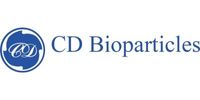
CD Bioparticles articles
Coating refers to the unit operation of applying a layer of outer coating material to the dry surface of the formulation. This coating material not only makes the product easier to identify, but even improves the pharmacokinetic properties of the drug by altering its release: ensuring that the drug reaches its target and provides sufficient concentrations in the body to be maintained for an extended period of time.
The concept of proteolytic targeting chimera (PROTAC) was first proposed by Crews and Deshaies laboratory in 2001, the team successfully achieved the degradation of methionyl aminopeptidase 2 (MetAp-2) by PROTAC method. Since then, PROTACs targeting androgen receptor (AR) and estrogen receptor (ER) have appeared one after another. In 2004, a PROTAC molecule that recruited the tumor suppressor protein VHL through a polypeptide fragme
Nanotechnology has not only received attention and applications in the field of drug delivery, but also has achieved many successes in the field of tissue engineering. Nano dressings can be defined as dressings in which nanomaterials are the matrix. The birth of nano dressings has brought new treatment methods for wound repair and burn care, such as nanohydrogels, nanofibers, nanomembranes, dendrimers, and polymer conjug
Sucrose is a disaccharide with a unique structure. It is a non-reducing sugar formed by removing a molecule of water from the glycoside hydroxyl group of a molecule of α-D-(+)-glucopyranose and a molecule of β-D-(-)-fructofuranose. During the hydrolysis process, the specific optical rotation of sucrose gradually changes from dextrorotatory to levorotatory, so the hydrolysis of sucrose is also commonly referred to as a conversion reaction. There are 8 chemically active hydroxyl grou
Heparin, also known as standard heparin or unfractionated heparin, is a linear polysaccharide consisting of 1-4 linked disaccharide repeat units of uronic acid and glucosamine residues. Heparin was discovered nearly 100 years ago and has been used clinically as a blood anticoagulant since 1935. This is due to its ability to bind to the antithrombin(serine protease inhibitor), causing the inhibitor to inactivate thrombin.
How to Get
